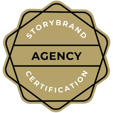What I’ve Learned From Harvard MBA Students
by Shawn Karol Sandy, on Sep 26, 2021 3:11:00 PM
What would you expect from Ivy League MBA students when it comes to selling?
A while back, I had a really cool privilege to offer a sales coaching session to Harvard MBA students! Harvard’s School of Business created an extensive buyer/seller scenario for their students which culminated in a role play where students each took turns being a buyer for a market-dominating retailer and also as a seller as a partner in a startup selling an innovative product into the retail category.
The role plays were recorded and as a coach, I was able to watch the scenarios play out before coaching the students. I was assigned 10 students but was able to watch both partners’ roleplays so I viewed 20 of these interactions between mock buyers and sellers.
I made special note to coach each individual on their efforts—especially as it aligned with their future endeavors, but I couldn’t help but note that there were consistent things every student overlooked. EVERY.SINGLE.ONE.
Part of the issue could lie in that this was a fictitious scenario—one which the students didn’t create, or feel any deep relationship with the outcome. Or, perhaps it was in how the details of the case were relayed to the students: buyer backgrounds, product pricing, margin goals, product trials, inventory turn, etc.
Each student stepped up to their turn as the seller and went straight into full-blown product feature vomit mode. This lasted for about the first three minutes then they went right into asking for a trial and negotiating numbers and margin.
I was shocked. Perhaps it’s the lack of context around how the students got to this meeting as the seller or maybe it’s a lack of thought and time to prepare for the exercise – either way, they missed something HUGE in their role plays.
In all their haste to describe their product and get to their desired test pilot numbers,
They each skipped these significant selling steps:
3. Know what you’re REALLY Selling: Transformation. Results. The “after.”
The students discussed the innovation of their new product, the materials it was constructed from, safety features, and customer reviews. They raved about why customers would love it and how it was a superior product. What they failed to recognize and focus on was a deeper dive into the “benefits” of their product.
Benefits are completely subject to your customers’ point of view. What your customers care about are results. They want to hear about the transformative power of your product or solution. Can you show them the “after” that you can generate? THIS is the most important thing your buyer wants to hear.
2. Know what you’re selling against
Apathy. The Status Quo. Fear of Loss. In several of the student scenarios, the buyers intuitively referenced the risk they faced by displacing current, successful vendors with an unknown, untested startup. Each time, the students drove right by this clue and pressed with the features of their product.
In most of our sales situations, our buyers already have a solution or provider. Our job is to understand how we can help them see past the potential loss of changing vendors; lower the risk to reap the rewards. We are naturally risk-averse so to try something new, to replace something that we’re comfortable with . . . it takes a comprehensive understanding of how YOU as the seller, will mitigate risk, and as in the above point, improve our current situation with increased rewards.
1. Understand what’s important to your customer
This list was in descending order because to get to numbers 3 and 2, you need to deploy step number 1: Ask your customers about the things that are important to them. No student asked any of the buyers about their priorities, decision-making process, or measurements for success.
How do you know what are meaningful outcomes for your customers if you don’t know what their priorities are? How do you connect the value of your offer to what they find valuable?
If you don’t understand what they fear losing the most (margin, supply, customers, market share) how do you know what to address in your cost of change or transition process?
Early conversations should be discovery around
What’s important to your customers
Questions such as,
- What are your expectations for this meeting?
- What are your current priorities?
- What are the criteria for selecting new products?
- Who’s involved in the process?
- What pieces need to be in place before you can implement them?
- What does a successful outcome look like?
Doing your homework on your customer, their company, their market—you can relate what you know about them to earn insights by asking questions such as those above. Example, “I see that you had a great 4th quarter last year but these past few quarters have been flat. Is innovation in your product offer part of your revenue growth plan?”
This question can show how much you know while helping you validate or disqualify what is important to your customers.
Without knowing these key pieces of intel, you’re simply guessing at positioning your product or solution in a way that’s attractive enough to your customers to overcome their risk of change and meet their key outcome needs.
Role-play scenarios are never a truly accurate estimation of how sellers will perform when they face real buyers and real circumstances. I take that with a grain of salt when I viewed the videos of their exchanges. And I give them ALL props for doing this exercise, knowing it was going to be recorded and reviewed by sales coaches. That’s a pretty intimidating scenario.
There were some varied results of how well students handled the scenario and negotiation. They ARE Harvard MBA students and much of their negotiation was brilliant.
I have no doubt they will go on to have dazzling careers as consultants or in finance, private equity, or as founders of the next generation of startups. Many of they already have experience in those fields.
I’m both humbled by the opportunity to work with them and grateful for the opportunity to learn from them.
What we might think is obvious takes conscious effort and consistent preparation.
Our Customers Don’t Care About Our Product if They Can’t See How it’s Valuable to Them
So make sure your focus is through their lens!
.webp?width=12693&height=4513&name=Sauce%20Logo%20Dark%20Ht%20(1).webp)

.webp?width=180&height=64&name=Sauce%20Logo%20Dark%20Ht%20(1).webp)












